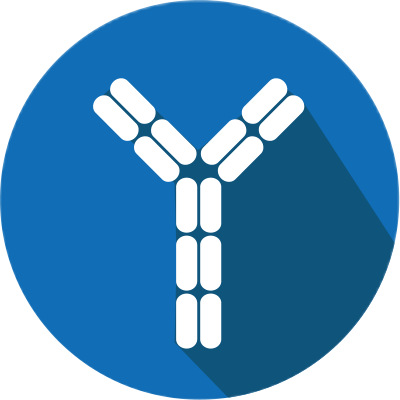
Cambridge Healthtech Institute’s Inaugural
Computational and Analytical Tools for Protein Engineering
Next-Generation Modeling and Informatics Tools for Biotherapeutic Engineering and Development
January 15-16, 2019
Improvements in computing power, instruments, modeling software and imaging technology are driving a new wave of interest in the application of these tools in antibody discovery and protein engineering. Structural biology and computational modeling are
now routinely applied in identifying unique epitopes and binding activity, and it is becoming standard practice to run a suite of assays and structural studies to evaluate the developability and manufacturability before advancing leads into development.
PepTalk’s new Computational and Analytical Tools for Protein Engineering gives researchers a comprehensive exchange in which to consider best practices and new technologies used to support the work of protein engineers on new constructs and
the discovery of unique new biotherapeutics.
Final Agenda
TUESDAY, JANUARY 15
1:00 pm Registration (Sapphire West Foyer)
1:30 Refreshment Break in the Exhibit Hall with Poster Viewing (Sapphire Ballroom)
2:00 Chairperson’s Opening Remarks
Johan Fransson, PhD, Director, Antibody Discovery and Development, Northern Biologics
KEYNOTE PRESENTATION
 2:05 A New Source of Tumor Neoantigens and Platform for Their Identification
2:05 A New Source of Tumor Neoantigens and Platform for Their Identification
Stephen Albert Johnston, PhD, CEO, Calviri, Inc.; Director and Professor, Biodesign Center for Innovations in Medicine, Arizona State University
We have discovered that frameshift neoantigens from RNA mis-processing are a rich source of components for cancer vaccines. All tumors produce many of these neoantigens. We have developed a peptide array that allows simple identification of the neoantigens
in each tumor from a drop of blood.
2:45 Improved Computational Modeling of Antibody-Antigen Complexes by Integration of Deep Mutational Scanning Data
 Andrew Wollacott, PhD, Principal Scientist, Visterra,
Inc.
Andrew Wollacott, PhD, Principal Scientist, Visterra,
Inc.
Accurate computational prediction of the structure of antibody-antigen complexes remains challenging due, in part, to the difficulty in identifying near-native models from incorrect poses. We have developed a workflow which integrates experimental deep
mutational scanning data with antibody-antigen docking for robust model generation. The presentation will describe an application of this workflow to a panel of antibodies, which enabled rational selection and engineering of one antibody for cross-species
antigen binding.
 3:15 Advanced Analytics and Visualization for Biologics Drug Discovery
3:15 Advanced Analytics and Visualization for Biologics Drug Discovery
 Andrew LeBeau, PhD, Senior Manager, Biologics Marketing, Dotmatics,
Inc.
Andrew LeBeau, PhD, Senior Manager, Biologics Marketing, Dotmatics,
Inc.
Biologics drug discovery places significant demands on software to handle the volumes of data and advanced computational routines necessary to uncover promising candidates. The software should also be accessible to the wide range of scientists involved
in the process. This presentation will highlight such capabilities within Dotmatics Vortex.
3:30 Antibody Protein Sequencing with Mass Spectrometry
 Mingjie Xie, CEO, Co-Founder, Rapid Novor, Inc.
Mingjie Xie, CEO, Co-Founder, Rapid Novor, Inc.
Many applications in antibody engineering require the direct sequencing of antibody proteins. At Rapid Novor (rapidnovor.com) we have developed a robust workflow and routinely sequenced antibody proteins. Here we share the success experiences, examine
common mistakes novices make, and present our practices to ensure the correctness of every amino acid.
3:45 Refreshment Break in the Exhibit Hall with Poster Viewing (Sapphire Ballroom)
4:30 Overcoming Challenges of High-Resolution Epitope Mapping by Use of NMR Spectroscopy: Case Studies and Practical Solutions
 Feng Ni, PhD, Project Lead and Laboratory Supervisor, Human Health Therapeutics,
National Research Council Canada
Feng Ni, PhD, Project Lead and Laboratory Supervisor, Human Health Therapeutics,
National Research Council Canada
Practical epitope mapping is still limited by: (1) the ability to prepare soluble antigen-antibody complexes with lasting stability; (2) efficient collection of multi-dimensional NMR data; (3) the intrinsic dynamics of the binding interactions. We will
present three case studies of (i) an intrinsically-unfolded domain of carbonic anhydrase IX; (ii) the well-folded Ig1 domain of human Axl with high affinity binding and (iii) the Ig2 domain of Axl with dynamic interactions.
5:00 Cellular and Analytical Assays for PK Engineering
Runyi Adeline Lam, PhD, Researcher, Chugai Pharmabody Research, Japan
During antibody optimization, antibodies with different properties are generated and these are evaluated using various cell-based or analytical assays. This presentation focuses on development of novel cell-based assays to aid in the screening process.
Examples from different projects would be shown to illustrate how this can improve the screening workflow.
5:30 Close of Day
5:30 - 5:45 Short Course Registration (Sapphire West Foyer)
5:45 - 8:45 Recommended Dinner Short Courses*
SC1: Introduction to CAR-T Engineering for Protein Scientists - Detailed Agenda
SC2: Structure-Based Optimization of Antibodies
Click here for more details.
*Separate registration required
Day 1 | Day 2 | Download Brochure
WEDNESDAY, JANUARY 16
7:45 am Registration and Morning Coffee (Sapphire West Foyer)
8:15 Chairperson’s Remarks
Marissa Mock, PhD, Principal Scientist, Therapeutic Discovery, Biologics, Amgen
8:20 Using Interface Expansion to Manipulate the Affinity and Specificity of Protein-Protein Interactions
 Brian Kuhlman, PhD, Professor, Biochemistry and Biophysics,
University of North Carolina at Chapel Hill
Brian Kuhlman, PhD, Professor, Biochemistry and Biophysics,
University of North Carolina at Chapel Hill
Protein binding affinity and specificity can be manipulated by redesigning contacts that already exist at an interface or by expanding the interface to allow interactions with residues adjacent to the original binding site. Two alternative methods for
interface expansion with the Rosetta molecular modeling program will be discussed. These approaches have been used to engineer tight binders for MAP kinases and the ubiquitin ligase KEAP1.
8:50 Computational Design of Protein Libraries
 Chris Bailey-Kellogg, PhD, Professor, Computer
Science, Dartmouth College
Chris Bailey-Kellogg, PhD, Professor, Computer
Science, Dartmouth College
To increase the hit rate of discovering diverse, high-performance protein variants via library screening, we have developed computational library design methods that bias entire populations towards simultaneous improvements in multiple properties of interest.
In application to biotherapeutic deimmunization, we have subjected optimized libraries to a single round of activity screening and successfully isolated highly mutated variants that are functionally equivalent to wild-type while also evading T cell
recognition.
9:20 NEW: A Platform Approach to Manage Developability and Manufacturability Risks of Biologics Molecules
Christopher Smith, PhD, Head of Biologics US, Biologics, Genedata
We present a workflow system that enables very systematic developability and manufacturability assessments from the very early stage to the later stages of the biologics R&D process, using both in silico methods and high
throughput analytical confirmatory methods. We show use cases not only for mAbs but also for complex multi/bispecific formats, as well as engineered therapeutic cell lines (e.g., CAR T cells). We also discuss building predictive models for developability
utilizing such a system.
9:50 Coffee Break in the Exhibit Hall with Poster Viewing (Sapphire Ballroom)
10:35 How Large is the Sequence Space for Aggregation-Resistant Antibodies?
 Christopher J. Roberts, PhD, Professor, Chemical & Biomolecular Engineering,
University of Delaware
Christopher J. Roberts, PhD, Professor, Chemical & Biomolecular Engineering,
University of Delaware
This presentation will focus on a multi-scale molecular modeling approach to providing design “rules” for down-selecting antibodies from a large number of sequence variants, without the need for expensive calculations or extensive expression
screens, with a view towards creating antibodies that are aggregation resistant. The test systems are primarily monoclonal antibodies, but the approach can be extended to additional constructs.
11:05 Building Methods to Predict Large Molecule Developability for the Early Research Pipeline
Marissa Mock, PhD, Principal Scientist, Therapeutic Discovery, Biologics, Amgen
During the preclinical development of large molecule therapeutics, panels of engineered variants are designed, generated, and screened to optimize the developability of lead candidates. Since many standard assays for developability require large quantities
of protein and are resource-intensive, we have developed and will present strategies and methods to predict complex biophysical behaviors from a combination of primary sequence and high throughput screening data.
11:35 In silico and Empirical Developability Assessment of Therapeutic Antibodies
 Johan Fransson, PhD, Director, Antibody Discovery and Development, Northern Biologics
Johan Fransson, PhD, Director, Antibody Discovery and Development, Northern Biologics
Antibody developability assessments are a key part of every discovery campaign. Typically, both in silico and empirical methods are used to rank candidates and assess risks impacting manufacturing, release and stability studies.
An overview of current in silico and empirical methods employed in our lab will be provided. Case studies will also be presented, highlighting how molecular modeling can guide rational design and selection of better behaved
lead candidate mAbs.
12:05 pm NEW: Enjoy Lunch on Your Own
1:15 Session Break
PLENARY KEYNOTE PANEL (Aqua Salon)
Click here for more details.
PepTalk Perspectives: Point-Counterpoint Discussions
2:00 Plenary Keynote Introduction
 Norman Packard, PhD, CEO, Daptics
Norman Packard, PhD, CEO, Daptics
2:10 Plenary Keynote Panel
Moderator:
 Howard Levine, PhD, President and CEO, BioProcess Technology Consultants
Howard Levine, PhD, President and CEO, BioProcess Technology Consultants
Panelists:
 George Badescu, PhD, Vice President, Scientific Affairs, Heidelberg Pharma AG
George Badescu, PhD, Vice President, Scientific Affairs, Heidelberg Pharma AG
 Manon Cox, PhD, Co-Founder & CEO, NextWaveBio
Manon Cox, PhD, Co-Founder & CEO, NextWaveBio
 Zhimei Du, PhD, Director, Bioprocess & Clinical Manufacturing, Merck
Zhimei Du, PhD, Director, Bioprocess & Clinical Manufacturing, Merck
 Paul Jorjorian, Vice President, BioProcess Sciences, Thermo Fisher Scientific
Paul Jorjorian, Vice President, BioProcess Sciences, Thermo Fisher Scientific
 Marina Kirkitadze, PhD, Deputy Director, Head of Biophysics and Conformation Unit, Analytical R&D Biochemistry, Sanofi Pasteur, Canada
Marina Kirkitadze, PhD, Deputy Director, Head of Biophysics and Conformation Unit, Analytical R&D Biochemistry, Sanofi Pasteur, Canada
 Stefan R. Schmidt, PhD, MBA, Head, Operations (COO), BioAtrium AG
Stefan R. Schmidt, PhD, MBA, Head, Operations (COO), BioAtrium AG
3:05 Refreshment Break in the Exhibit Hall with Poster Viewing (Sapphire Ballroom)
4:00 Chairperson’s Remarks
Philip M. Hemken, PhD, Principal Research Scientist, R&D, Abbott Laboratories
4:05 Structural Bioinformatics of Antibodies and Antibody Computational Design
 Roland L. Dunbrack, Jr., PhD, Professor, Institute for Cancer Research, Fox Chase Cancer Center
Roland L. Dunbrack, Jr., PhD, Professor, Institute for Cancer Research, Fox Chase Cancer Center
We have performed extensive structural bioinformatics studies of the CDRs of antibodies as well as the ‘de’ loop or CDR4. We have developed a computational antibody design algorithm in Rosetta that utilizes our CDR clusters to graft new CDRs
and to perform sequence optimization according to sequence variation observed in clusters of similar CDR conformations. We have benchmarked this method with a novel metric and validated it experimentally.
4:35 Exploration of Small Protein Folds and Their Defining Features
 Eva-Maria Strauch, PhD, Assistant Professor, Pharmaceutical and
Biomedical Sciences, University of Georgia
Eva-Maria Strauch, PhD, Assistant Professor, Pharmaceutical and
Biomedical Sciences, University of Georgia
Nature only samples a small fraction in sequence space, yet many more amino acid combinations can fold into stable proteins. We developed a computational platform that enables us to efficiently sample and design any given topologies with high structural
diversity to serve as new scaffolding proteins, guide future design efforts and help our general understanding of stability. Using a high-throughput stability screen, we evaluated 45,000 of 9 topologies designed with our new pipeline and derived stability
prediction models using machine learning algorithm.
5:05 Development of Automated Companion Diagnostic Immunoassays in Collaboration with Therapeutic Partners
 Philip M. Hemken, PhD, Principal Research Scientist, R&D, Abbott Laboratories
Philip M. Hemken, PhD, Principal Research Scientist, R&D, Abbott Laboratories
Abbott partnered to develop two automated diagnostic immunoassays as potential future companion diagnostic tests to identify patients with severe asthma who would most likely benefit from an investigational anti-IL-13 immunotherapy. Abbott developed tests
to measure the serum levels of the proteins periostin and DPP4 (dipeptidyl peptidase-4), which have potential to be predictive biomarkers for up-regulated IL-13 in patients with severe asthma.
5:35 Assessment of Orthogonal Techniques for Epitope Mapping of Therapeutic Antibodies
 Sam Wu, PhD, Principal Scientist, Janssen BioTherapeutics
Sam Wu, PhD, Principal Scientist, Janssen BioTherapeutics
Epitope mapping provides crucial information for selecting therapeutic antibodies. A progressive approach to mapping is applied to help identify new function, support antibody engineering, define a mechanism of action, and enable intellectual property.
Specifically, DEPC-labelling and hydroxyl radical footprinting (HRF) results with epitopes of therapeutic antibodies identified by solution HDX-MS will be presented. Examples of the impact of binding site mapping on progression of antibody discovery
will be described.
6:05 - 7:00 Networking Reception in the Exhibit Hall with Poster Viewing (Sapphire Ballroom)
7:00 Close of Computational and Analytical Tools for Protein Engineering Conference